
Mission: Impossible - Dead Reckoning Part One reunites us with Tom Cruise's Ethan Hunt for another jaw-dropping plunge into action mayhem. Once again, Cruise and writer-director Christopher McQuarrie, here fashioning his third Mission movie, make a truly formidable team, consistently escalating the level of action to leave our nerves frazzled and our adrenaline at maximum overload.
The big-screen iterations of the Mission: Impossible franchise, inspired by Bruce Geller's classic 1960s TV series, date back to 1996. The various movies, of which Dead Reckoning Part One is the seventh, have trawled in an eclectic series of directors, each of whom has brought their own house style to the respective entries.
On the eve of Dead Reckoning Part One's release, here's how the Mission series has evolved, aesthetically and in terms of its exhilarating on-screen action.
1. Mission: Impossible (1996)
Horror veteran Brian De Palma got the Mission movie train rolling, and his idiosyncratic style distinguishes the inaugural movie in the franchise. In stark contrast to the action-heavy instalments that came later, Mission: Impossible is a far nervier, more unpredictable experience that takes great delight in bamboozling the audience as to who can be trusted. In essence, it efficiently puts us in the shoes of Cruise's Ethan Hunt who is compelled to seek out a mole in the IMF after most of his team are betrayed and killed.
De Palma's moody sense of location is immediately evident from the arresting, Prague-set opening sequence. It's wreathed in nighttime fog and shadow as Ethan confronts the terror of his team members being systematically executed. One can definitely sense the twisted atmosphere of Brian DePalma's classic chillers like Carire (1976) and, perhaps more pertinently, his Alfred Hitchcock pastiches like Dressed to Kill (1980), which ratcheted up the suspense in Hitchcock's classic style.
Replete with fake-out sequences, discombobulating POV shots and an inventive juxtaposition of music versus ambient silence (the famous vault dive sequence embodies this), the film also has a suitably paranoid atmosphere. The early cafe conversation between Hunt and slippery IMF section chief Eugene Kittridge (Henry Czerny, who returns in Dead Reckoning Part One), uses extreme close-ups and canted angles to replicate Ethan's emotional distress, prior to the scene's explosive climax. There's also an emphasis on sleight-of-hand magic that is soon to play an important role in Dead Reckoning.
Quirky and offbeat though Mission: Impossible is, it also set in motion practically all of the tropes that were seized upon in the sequels. This includes the always entertaining 'mission planning' montage sequences that stack up an impossible number of obstacles to overcome, the ever-present use of Lalo Schifrin's propulsive theme music (in this instance adapted by composer Danny Elfman), the tricksy use of Scooby Doo masks and the physics-defying set-pieces. The last of those is represented by the climactic helicopter/Eurotunnel face-off that broke new ground for CG effects back in 1996.
2. Mission: Impossible II (2000)
De Palma was out and action veteran John Woo (Hard Boiled) was in for the second Mission: Impossible movie. To say that the first and second instalments differ in style is an understatement. If the former was a dizzying, queasy and compelling plunge into the nature of loyalty, then the second jettisons pretty much all of that for quintessential Woo tropes including slo-mo (there's a LOT of that), doves, slo-mo walking through flocks of doves and acrobatic insanity that usually involves weaponry and moving vehicles. And it's a lot of fun.
In line with Woo's entertaining operatic excesses, composer Hans Zimmer completely reworks the theme tune, fashioning it as a guitar-laden rock opera with occasional vocal input from Gladiator's Lisa Gerrard (and let's not forget the Limp Bizkit take on the theme – you don't get more 2000s than that). Cruise is the anchoring point and he pivots from Ethan Hunt's relatively grounded portrayal in the first movie, instead cementing his on-screen invincibility by doubling down on his own stunts and fight sequences.
This begins with the famous Utah rock climbing opening sequence and later extends to an atrium dive from a helicopter, finally culminating in a gleefully ridiculous motorbike duel slash beach smackdown with Dougray Scott's evil Scottish villain Sean Ambrose, the second in a long series of rogue IMF agents who need to be taught their place. As Cruise flicks his locks all over the place (this movie would also cement the alternating Cruise hairstyles trope), the movie acts as a fascinating case study as to how one franchise can reinvent itself in a wildly different idiom.
3. Mission: Impossible III (2006)
Despite Mission: Impossible II's fiscal success, for many die-hard fans, it was a departure too far. Come the third instalment and Cruise was no longer the star of the show but the de factor auteur of the franchise, assigning and approving various story treatments and also picking the directors at the helm. Evidently conscious of the course correction that was needed for the third movie, Cruise went through several behind-the-scenes overhauls before he was happy, removing initial director Joe Carnahan and junking a set-up that would have starred Kenneth Branagh and Carrie-Anne Moss.
Eventually, the job of director went to J.J. Abrams, at this stage riding high off the meteoric success of Lost. In fact, Cruise hired Abrams out of admiration for the former's espionage series Alias, starring Jennifer Garner, and Abrams' playful sense of style from that show is apparent in the finished film. Remarkably, it was Abrams' feature film debut and he takes to it like a duck to water, reinstating the covert ops approach of Brian De Palma's original while also doubling down on the team ensemble dynamic that had fallen somewhat by the wayside in favour of Cruise's hair-tossing muscularity. This includes the introduction of Simon Pegg's Benji Dunn, by now established as a series regular.
From the opening flash-forward sequence to the gritty, brassy propulsion of regular collaborator Michael Giacchino's score, Abrams' tendencies are all over the movie. It's clad in lens flare and shaky cam, aesthetic qualities that would later define his Star Trek reboots. It keeps the story rolling at a fair old clip and doubles down on the Tom Cruise stunt showcase sequences, which variously entail the star being blown into a car by a shockwave and a breathless base jump off a Shanghai skyscraper.
At the same time, continuity is maintained with the devious use of the face mask disguises and the enjoyably daffy infiltration set-pieces (the Vatican is the target, this time). It also sports, arguably, the greatest villain in the series to date in the form of Philip Seymour Hoffman's chillingly nonchalant arms dealer Owen Davian.
4. Mission: Impossible - Ghost Protocol (2011)
This was the moment when we transitioned from Tom Cruise the A-list star to Tom Cruise the veritable one-man stunt-making brand. Some five and a half years after Mission: Impossible III, Cruise re-emerged with what became the most financially and critically successful Mission movie so far.
Cruise found exactly the right collaborator to act as a conduit with his jaw-dropping, daredevil on-screen escapades. In keeping with the revolving door of directors, J.J. Abrams stepped to the back into a producer role and filmmaker Brad Bird came to the helm. This was an inspired choice given that Bird honed his craft in animation on the likes of The Iron Giant (1999), The Incredibles (2004) and Ratatouille (2007). This underlined his acute understanding of slapstick comedy and physical movement when it came to making his live-action debut in Rogue Nation, not to mention his skill with ensemble comedy that encompasses Simon Pegg's Benji and Jeremy Renner's new character Brandt.
Bird wastes no time with an opening prison break sequence set to Frank Sinatra's 'Ain't That a Kick in the Head'. From there, we're in a perpetual state of giddy escalation as Bird finds amusing and spirited ways of reinvigorating what had become old and familiar tropes. This is evident in both the small touches (an eye scan affixed to a moving train carriage; a self-destruct phone message that fails to do so without physical intervention) and the grandiose sweeps.
This is arguably the first properly exotic and globe-trotting Mission: Impossible movie, ranging from Budapest to Prague, Dubai to India. The astonishing usage of Dubai's Burj Khalifa skyscraper embodies the tenacity of both Cruise and his filmmaking team, as Ethan Hunt scales the outside of the building and later bungees down the outside to genuinely gasp-inducing effect. The scene doubled down on the tangibility and practicality that fans demanded from the series, setting the standard for what was to come.
5. Mission: Impossible - Rogue Nation (2015)
The filmmakers switched around again for the fifth movie, Rogue Nation, and most unusually for the series, incumbent helmsman Christopher McQuarrie has been with the franchise ever since. McQuarrie's skill resides in his ability to synthesise all the best elements of his directorial predecessors. He possesses the tension-building flair of Brian De Palma (which is also no doubt honed from McQuarrie's Oscar-winning success in writing 1995's The Usual Suspects), the energetic wit of J.J. Abrams and Brad Bird, and a knack for the pleasing set-piece absurdity of John Woo.
Given that McQuarrie is now three films deep into the series, it's also clear that he's the director who has synergised most effectively with Cruise. McQuarrie is compelled to remain in lockstep with Cruise's increased emphasis on nail-biting stuntwork and to the director's credit, he has arguably taken the action set-pieces to the next level. More than that, McQuarrie has been able to fashion the Mission: Impossible action sequences as self-contained works of cinematic art in and of themselves, testaments to the majesty of the cinematic experience and the importance of undertaking physical elements in camera.
The movie hits the ground running, or, rather, leaves the ground altogether, during the infamous opening sequence that has Cruise clinging onto the outside of a moving plane. If Mission: Impossible has ultimately always been about gluing individual set-pieces together, then Rogue Nation is the one that had us perpetually hungry for what was coming next.
Admirably, after this air-borne opening, the movie keeps its end up with an agonisingly protracted underwater sequence, for which Cruise learned to hold his breath for six minutes, a fraught car chase through the narrow alleyways of Marrakech and an ensuing motorbike pursuit that is dynamically shot by British DP Rob Hardy. Outwardly, the movie might not appear to be doing anything radical, but what's truly radical is how McQuarrie and Cruise hone and refine all the constituent elements we've come to love from the series.
6. Mission: Impossible - Fallout (2018)
As the Mission movies have progressed, the action blockbuster landscape has also evolved around the franchise, transitioning from the relative tangibility of the pre-CG age in the 1980s and 1990s to a much more digitally reliant modus operandi. However, Mission: Impossible - Fallout was able to distinguish itself by staying true to the former philosophy, pushing its cast and crew to the limit with a truly remarkable series of practical, hair-raising and thrilling set-piece stunts.
In a historic first for the series, a filmmaker transitioned from one Mission: Impossible movie to the next. Christopher McQuarrie doubles down on his work on Rogue Nation, which in fairness was more of a dry run, and really opens the taps in his collaboration with Tom Cruise. The two collaborators clearly realised that in order to beat the cinematic competition, they had to go one better in practically every scene. And with Cruise in the driving seat, the movie is never lacking in physical ambition, or the ability to realise those inherently cinematic goals.
Once again, all of the tropes are in place, from the locations (Paris, London, New Zealand) to the use of masks and the team dynamic. However, there's more of a seriousness of intent in Fallout, perhaps akin to Brian De Palma's original movie, harnessing a sense that our characters can, and will, get physically and emotionally wounded. This was summed up by Tom Cruise's notorious on-set accident after he broke his ankle sprinting across London rooftops.
Perhaps unsurprisingly, this on-set accident became an emblem of both Cruise and the wider franchise: blood, sweat, tears and sheer craft will result in something more palpably tangible, particularly when it's the A-lister putting themselves in harm's way. Fallout recognises and exploits the vicarious thrill of watching a truly famous individual putting their life on the line for the purposes of our own entertainment, and by the time we reach the awesome helicopter stand-off (for which Cruise attained his own pilot's licence), it's all we can do to catch our breath.
The time has come to accept your mission. Click the link below to get your tickets for Mission: Impossible - Dead Reckoning Part One. It hits Cineworld screens on July 10th.

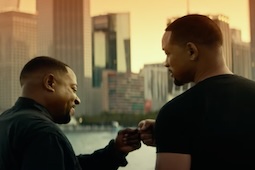
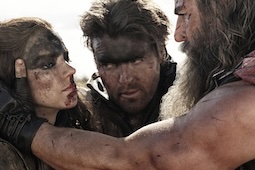

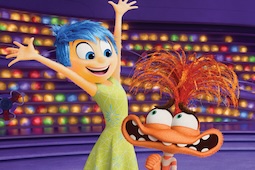


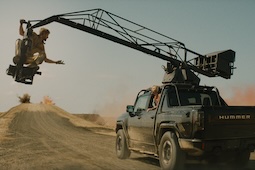
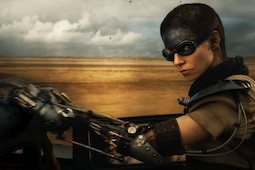
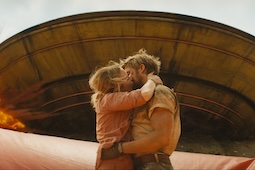
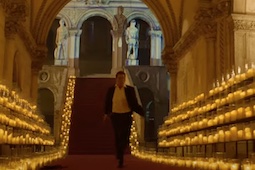



.jpg)
.png)



